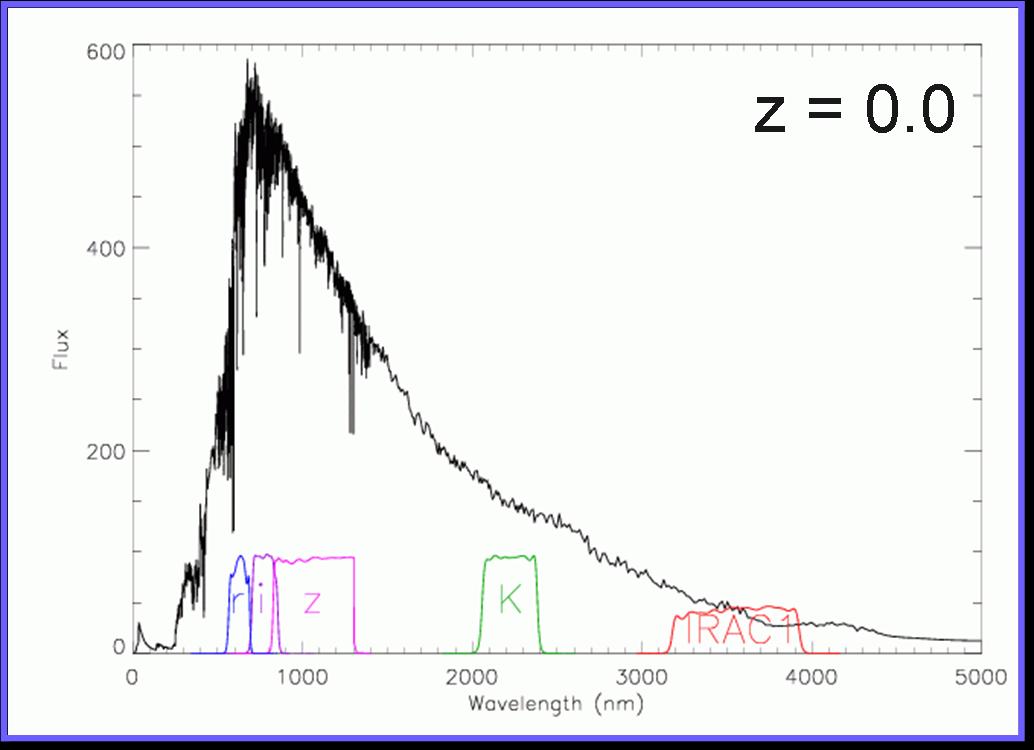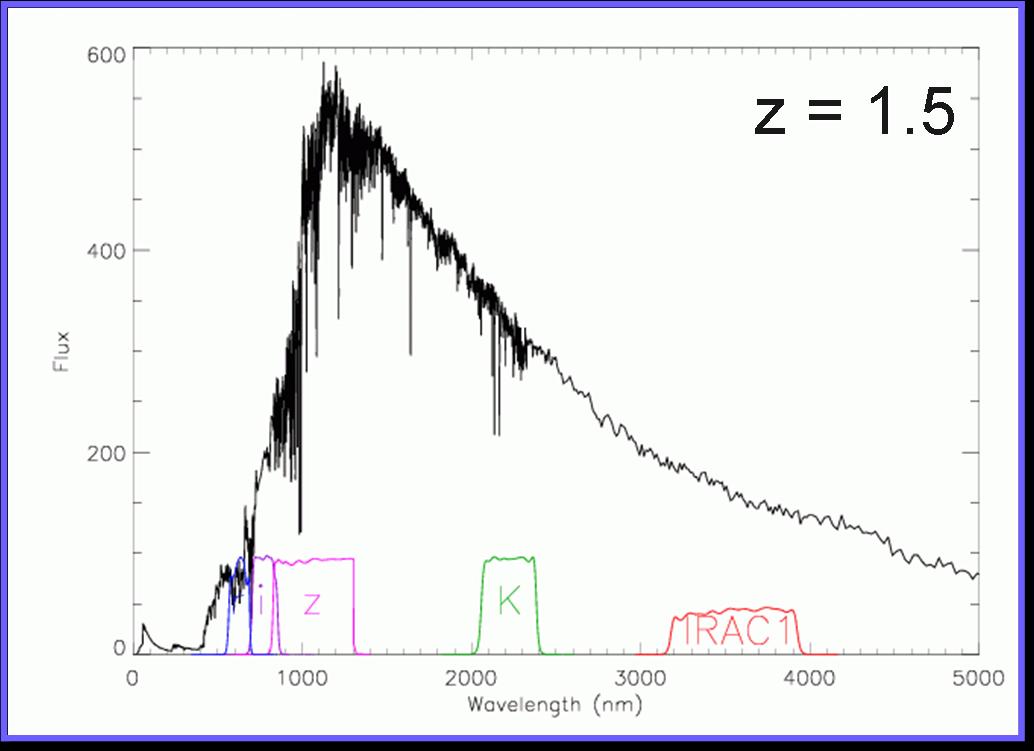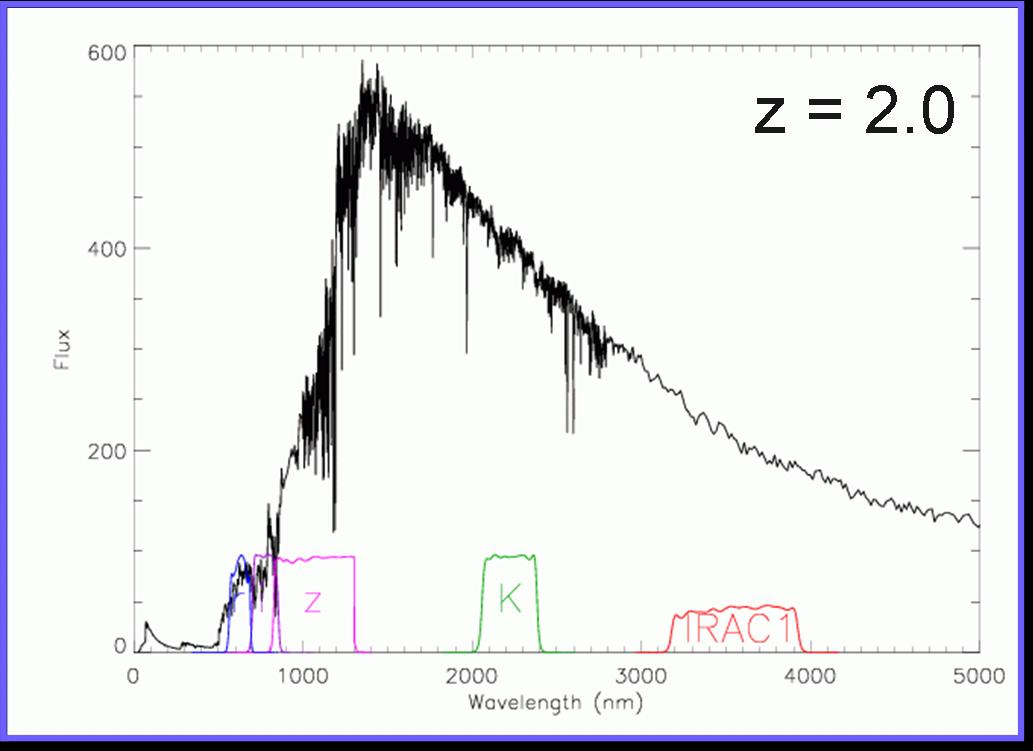

The CRS algorithm selects clusters by using the fact that the cluster galaxy population is dominated by ellipticals and that they lie along a linear relation in the color-magnitude plane. If two filters that span the rest-frame 4000 Angstrom break are used to construct the color-magnitude diagram, cluster ellipticals are always the brightest, reddest galaxies at a given redshift, and therefore provide significant contrast with the field. The original technique was first developed by Gladders & Yee (2000) and is being used very successfully to target clusters in the 0.2 < z < 1.1 range where the R - z' filter combination spans the 4000 Angstrom break (see below).




The figure shows the observed SED of an early type at various redshift. Note that at z ~ 1.1, the z' filter is no longer redward of the rest-frame 4000 Angstrom break, and to detect early types at higher redshift, a redder filter must be employed. This means using near-IR filters.
Spitzer 3.6 micron is an obvious choice for the ``red" filter. The z' filter is a better choice of ``blue'' filter than e.g., R or i' because it is blueward of 4000 Angstrom at z > 1.1, and yet becomes only as blue as rest-frame U at redshift 2.